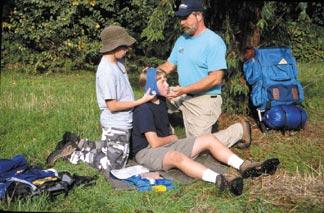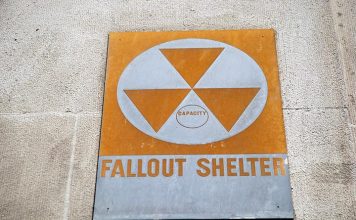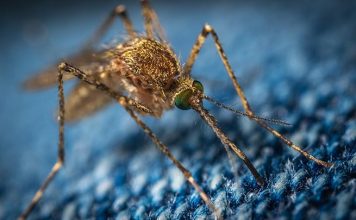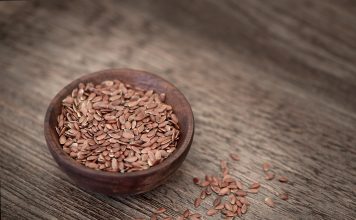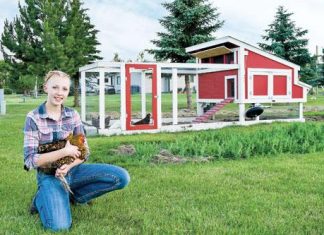 |
|
| Issue #75 • May/June, 2002 |
We are used to being able to see a doctor at any time for any reason, no matter how small. Will this always be the case? Not necessarily.
There are many scenarios in which access to medical care may be restricted. You could be on your own for a few days to a few weeks. All it takes is a major natural disaster, such as a blizzard, earthquake, or flood, a sustained power outage, or a terrorist attack to disrupt routine care. Doctor’s offices and walk-in clinics will close. In a disaster with mass casualties, doctors will all be at hospitals dealing with the seriously injured.
New threats, such as biological or nuclear attacks, could cause hundreds of thousands of casualties. Unlikely? We all hope so. If one occurred, however, there may be regional or national quarantines and doctors from around the country will be sent to the affected area, causing shortages locally.
During any sustained natural or man-made disaster you may be doing things that you normally would not. Cutting or lifting firewood, cooking over an open fire, using a gasoline generator, working by flashlight, lifting sandbags, and any number of other activities may expose you to the chance of injuries or burns that you would normally not face. Improper food storage, sanitation problems, and contaminated water during a disaster can expose you to illness that you would not normally have to worry about.
|
Are you prepared for the many situations that could limit your availability to medical care? Many individuals and families are not. During one earthquake in southern California, people lined up outside hospitals for Band-Aids, while overworked staff struggled to deal with the seriously injured. Now is the time to prepare. You need to be able to take care of your own medical needs when no doctor is available.
The information presented here is intended to help you plan and prepare for the possibility that you might need to manage your own routine medical care and minor injuries if medical care is not available. It is not a substitute for seeking proper medical care when it is available.
In life-threatening situations, always seek medical care whether there is a disaster or not. Call 9-1-1 or your local emergency number for serious problems such as a person who is unconscious, has trouble breathing, has chest pain or pressure, is bleeding severely, is vomiting blood, has a seizure, severe headache, or slurred speech, has injuries to the head, neck, or back, has possible broken bones, or appears to have been poisoned.
Preparing for the worst
Well before a disaster strikes, you need to prepare by having the knowledge and supplies available to take care of yourself. Educate yourself in first aid and medical care by taking a class in first aid and CPR, available through the American Red Cross and other community organizations. Obtain first aid books that you can refer to, if necessary. Many first aid and home care books are available at your local bookstore or on the Internet. Several that cover a wide spectrum of injuries and illnesses include Community First Aid and Safety by the American Red Cross, the Boy Scout Handbook by the Boy Scouts of America, Wilderness 911 by Eric Weiss, M.D., and the Mayo Clinic Family Health Book.
Next, have a good first aid kit and a stock of medicines that you might need. You should have a first aid kit in every car and a larger family one at home. You can buy a ready-made kit or make one up yourself. I prefer to make my own so that I am sure it has what I need for every situation. It may be more costly, but you can be confident that you have enough of the right materials.
Several variables will influence what your kit will contain, including your medical expertise, the distance to and availability of medical care, the number of people in your family, any preexisting medical conditions of family members, and your geographic location. For example, you would want a Sawyer Extractor for snakebites if you lived in Arizona, but not if you lived in Alaska.
To make your own first aid kit, use a list from one of your books and supplement it as needed. When I do this, I make a list of problems I might need to treat and then list the materials for each. For example, you will want materials to treat bleeding and lacerations, burns, sprains and fractures, and medicines for fever, pain, vomiting, diarrhea, coughing, and rashes. Include over-the-counter medications for any other problems you may have including heartburn medication, Preparation H, or Milk of Magnesia. Also, make sure you have an ample supply of any prescription medications that you take, along with a written copy of the prescription, which would be handy if your doctor is unavailable to authorize a refill. Depending on your situation and the remoteness of your location, you may want to ask your doctor about the advisability of having some prescription antibiotics and pain medicines in your family medicine kit.
|
Keep your first aid kit and medicines in a container or pack that you can easily grab in an evacuation and make sure everyone in the family knows its location.
Once you have your family medical supplies together, consider what health and sanitation problems you could be faced with in a disaster or survival situation. Where are you going to get water once you have used up any that you have stored? Will it be potable or could it be contaminated, needing to be purified. What about food? How will you keep it from spoiling?
Sanitation is even more important in a disaster than other times. Diseases can be spread easily so be sure to have soap to wash hands and appropriate facilities to deal with human waste.
Finally, the healthier you are when a disaster or survival situation strikes, the greater the chance that you will survive. Exercise regularly, eat well, have preventative medical and dental care, and be happy.
When disaster strikes
Now that you are prepared, what do you do if a disaster occurs? First, stay calm and make sure to account for everyone. If in an unsafe area, move to safety. Treat any injuries and comfort those around you.
Once you are safe and injuries are treated, stop and think. How bad is your situation? What risks do you face? Is there a continued threat from the disaster? Can you expect outside help? How long will you likely need to depend on yourself? What shelter, food, water, medical, and other resources do you have available? Develop a well thought out plan of action.
Include preventative and safety measures for your food, water, sanitation, health, and safety. Accidents and injuries can occur during disasters as individuals are performing activities that they are not used to doing. You do not need to complicate your already difficult situation with injuries. Try to stay as healthy as possible, avoiding illness or injuries.
The remainder of this article will give you some ideas of common medical problems that you might be faced with. Again, it is recommended you take a course in first aid and not depend solely on this article.
Managing common injuries
Lacerations: Cuts (lacerations) are one of the most common injuries and can be caused by knives, broken glass, scissors, or falls. Deep cuts can damage blood vessels and nerves.
The first step in treating a cut is to stop the bleeding. While wearing a disposable latex or nitrile glove, place several sterile gauze pads over the cut and apply pressure directly over the wound for at least five minutes. Most bleeding can be stopped this way. Sometimes pressure may need to be held for up to 30 minutes. Nasal sprays that contain blood vessel constrictors, such as NeoSynephrine or Afrin, can help stop minor bleeding. Moisten a sterile gauze pad with the spray and pack it into the wound for five minutes before removing.
|
After the bleeding has stopped, clean the wound to remove bacteria, dirt, blood clot, and damaged tissue. Use a 10 to 15-ml syringe filled with water to rinse the wound. This works like a high-pressure squirt gun to clean the wound of debris. Inspect the wound to make sure all particles of dirt or dried blood are gone, as they will be a source of infection.
Some wounds need to be stitched (sutured) by a doctor to help the healing process, improve the appearance of scars, and reduce the chance of infection. A general rule of thumb is to stitch any wound over an inch long or one where the edges of the skin do not fall together. Any wounds that show bone or muscle, are large or deep, involve joints, hands, or feet, or that could leave conspicuous scars, such as those on the face, should be seen by a doctor.
If wounds do not need to be stitched or if medical care is not available, they can be closed with wound closure tape strips, such as Steri-Strips, or butterfly bandages. Apply a thin layer of tincture of benzoin to the skin on each side of the wound and let it dry for 30 seconds. Apply the tape to the skin on one side of the cut, gently pull the wound closed so the skin edges just touch, and attach the tape to the skin on the other side. The tape should extend about one inch on each side of the wound. Apply more strips of tape about ¼ inch apart until the entire wound is closed.
After closing the wound, place a non-adherent dressing, such as Telfa or Adaptic, over the wound to keep it clean, followed by an absorbent gauze, and, finally, an elastic bandage or rolled gauze bandage to keep the dressings in place. Check the wound daily for infection, which will present as increased pain, redness, swelling, pus, or greenish drainage from the wound. If infection develops, seek medical care since antibiotics may be necessary.
Strains, sprains, and fractures: Injuries to the bones, muscles, and joints are common. Sprains are stretching or tearing of ligaments that attach bones together and strains are tearing or stretching of muscles or their tendons that attach them to bones. The ankle and knee are the joints most often sprained. Muscle strains from overexertion or lifting are common, with back strains being particularly disabling.
Pain or tenderness at the site, swelling, bruising, and pain on movement of the injured area are signs of a strain or sprain. These are also present with a fractured bone and it may be difficult to distinguish between fractures and strains or sprains.
Standard treatment for any sprain or athletic injury is summarized by the acronym RICErest, ice, compression, and elevation. Take the stress off the injured area by resting to prevent further damage to the ligaments or muscles. Apply ice early to reduce the swelling and pain. It should be used for up to 20 minutes 3 to 4 times per day. Swelling will return once the ice is removed unless a compression wrap is used. Place padding, such as gauze or socks, over a sprained joint and wrap with an elastic bandage. It should be comfortably tight and loosened if there is increased pain, numbness, or tingling. Elevate the injured area to reduce swelling. Continue the RICE treatment for the first 72 hours. After that, tape or splint the injured area to stabilize it and prevent further injury.
Non-steroidal anti-inflammatory medications, such as ibuprofen (Motrin) 600 mg. three times a day with food, can be taken to reduce both inflammation and pain.
|
Bone fractures are characterized by pain, swelling, bruising, deformity, the inability to put weight on or use the injured part normally, or the grating sound of bones rubbing against each other. The injured person may have heard a snapping or popping sound at the time of the injury.
Sometimes it can be difficult to tell the difference between a fracture and sprain without an x-ray. All known or suspected fractures require medical evaluation. Unstable or displaced fractures should be stabilized with a splint by emergency medical personnel or, if not available, by first aid methods before transport to a doctor hospital.
Back injuries: Muscle strains from overexertion or lifting heavy objects are the most common cause of acute back pain. Pain can be mild or so severe that the injured person is unable to sit or stand. Generally, the pain is worsened by bending, moving, or touching the area and made better by lying flat with the knees bent or supported by a pillow.
Bed rest is the initial treatment. Have the injured person lie on their back with a pillow under the knees, or on their side with a pillow between their legs for 1 to 2 days, while taking anti-inflammatory medications such as ibuprofen 600 mg three times a day with meals. Ice packs will reduce swelling and decrease pain.
After two days, resume gentle activity as longer bed rest can slow recovery. Most people with back strains recover on their own in 2 to 4 weeks.
Ruptured (herniated) disks are ruptures of the cartilage discs in between the vertebrae of the back. Heavy lifting can cause discs to rupture and put pressure on the spinal nerves causing pain which can radiate down the buttock and leg (sciatica). The pain is worse with sitting, bending forward, coughing, and lifting the leg. Numbness or tingling of the leg may occur. Treatment is initially the same as a back strain, however the injured person should seek medical care.
Severe back pain that is not made worse with movement or change of position can be a sign of a serious abdominal problem, including a kidney stone or kidney infection. Seek medical care.
Burns: Burns can be caused by heat, flames, chemicals, or by electricity. The severity of the burn depends on the temperature of the heat source, the length of time of exposure, the size of the burn, and the location on the body. First-degree burns, such as minor sunburns, injure the first layer of skin and cause redness and pain. Second-degree burns injure deeper layers of skin, causing blisters. Third-degree burns destroy the skin and burn into deeper tissue layers or muscle and are very serious. They can look charred, black, or brown and may be painless if nerve endings have been burned. When burns damage the integrity of the skin, the body loses fluid and is susceptible to infection.
The first thing to do to care for burns is to stop the burning. Put out flames on clothing and cool the burned area with large amounts of cool water for several minutes. Cover the burned area with dry, sterile dressings to help prevent infection. Don’t apply any type of ointment or burn cream as it seals in heat and does little to reduce pain. Blisters should be left unbroken to prevent infection.
Critical burns require immediate medical care. An ambulance should be called for burns that are large, involve breathing difficulty, are on the head, neck, feet, or genitals, cover more than one part of the body, or result from chemicals, explosions, or electricity. Stop the burning, cover the burned area to prevent infection, and keep the victim from becoming chilled while you wait for the ambulance.
Managing common illnesses
Bad Water: Drink water that you have stored and know is safe. If that is not available, you can collect rainwater, which is safe to drink without purifying. If you use water from other sources, you must purify it before drinking.
Water taken from natural sources such as rivers, streams, and lakes may be contaminated with protozoan parasites, such as Giardia and Cryptosporidium, or bacteria, such as E. coli and Salmonella. Wells that have been in flood waters may also become contaminated with these organisms. City water supplies occasionally become contaminated and there is a potential threat of terrorists attacking our water supplies.
Boiling water is an effective way to kill Giardia and other waterborne diseases. Water above 185°F (85°C) will kill all microorganisms within a few minutes. Therefore, in the time it takes water to boil at 212°F (100°C) all potential disease-producing organisms will be killed. While an excellent method of purifying water, the problem with boiling water for drinking is that it takes a long time and considerable fuel, especially if you are with a large group.
|
Iodine and chlorine products have long been used to chemically treat contaminated water both in the wilderness and in municipal water supply systems. Iodine products, such as Polar Pure and Potable Aqua work well against Giardia, the most common contaminant, but are not effective against Cryptosporidium. Chlorine based products, such as halazone tablets and liquid chlorine (unscented chlorine bleach) may be used to purify water for people with iodine allergies or restrictions, although they are less effective than iodine products in treating water infected with Giardia. Follow manufacturer recommendations for any of these products.
A convenient way to purify water is with a commercial backpacking-type water filter that is designed to catch disease-producing microorganisms. Water is pumped through a microscopic screen that filters out microorganisms of a certain size. It would be worth having one with your emergency preparedness supplies.
Drinking bacteria or parasites in contaminated water will often produce a syndrome of diarrhea, gas, and abdominal cramping, in the case of Giardia beginning about 7 to 10 days after exposure. Nausea, loss of appetite, tiredness, vomiting, and weight loss may also occur.
Seek medical care if you have such symptoms for over 24 hours. Antibiotics, such as Flagyl 250mg three times per day for seven days used for Giardia infections, can cure the problem.
Diarrhea: Diarrhea is frequent (more than three a day) loose stools that can be caused from viral illnesses, bacteria from bad water or food, parasites from bad water, food allergies, inflammatory bowel disease, and anxiety. Abdominal cramps, nausea, vomiting, fever, and fatigue may also be present.
No treatment may be necessary if it lasts only 1 to 2 days. Diarrhea may be serious if it lasts longer or if there are more than 10 bowel movements a day. In severe diarrhea, up to 25 quarts of water can be lost in a day, rapidly leading to dehydration.
For diarrhea lasting more than three days or when accompanied by blood or mucous in the stool, fever greater than 101°F, severe abdominal pain or distension, or dehydration, the victim needs medical care for intravenous fluids and treatment of the underlying cause.
If these are not present, treat diarrhea by rehydrating the victim with water and electrolytes to replace lost salts, potassium, and bicarbonate. Oral rehydration salts containing the proper electrolytes are available commercially. Anti-diarrheal medications, such as Imodium, can reduce cramping and fluid loss. Imodium has fewer potential side effects than Lomotil. Pepto-Bismol and Kaopectate can also be used, but are less effective.
Dehydration: Dehydration is water loss greater than the amount the body needs to maintain its balance. It occurs when lost water is not adequately replaced and it decreases the ability of doing even the simplest of activities. Dehydration will also increase the chance of severe shock if an individual is injured.
Normally, the body needs 2 to 3 quarts of water a day to maintain normal balance. Sweating from heat, exercise, or work increases the amount of water loss dramatically. In conditions of heavy activity, 5 to 6 quarts (1½ gallons) or more can be needed per day.
By the time an individual is thirsty, they are already dehydrated. A 5% loss of body water, only 2.5 quarts for a 150-pound person, will cause thirst, irritability, nausea, and weakness. A 10% loss, 5 quarts for the same person, will result in headache, dizziness, inability to walk, and tingling sensations of the arms and legs. A swollen tongue, dim vision, numb sensations on the skin, and painful urination can occur with a 15% loss of water and any greater can cause death.
It is easy to forget to drink or to have inadequate water available during a crisis situation. Dehydration is largely preventable, so plan your daily water needs.
Treatment for dehydration is to replace the lost fluids. Replace fluids by drinking water, juice, lemonade, soup, decaffeinated coffee, Gatorade, or similar sports drinks.
Vomiting: Many things can cause vomiting, including food poisoning, stomach flu, viral illness, motion sickness, anxiety, pregnancy, and irritants to the stomach such as medications. Drink small amounts of clear liquid such as soup, tea, 7-Up, or diluted Gatorade. Be careful not to drink too much too soon, which will distend the stomach and cause more vomiting. Once vomiting has stopped, bland food such as toast or crackers may be started, progressing to a normal diet as tolerated.
Medical care should be sought for vomiting that is associated with head or abdominal injury, fatigue or confusion, severe abdominal pain or distention, fever over 101°F, fresh or dried blood in the vomit, or if it lasts over 24 hours. The source of the vomiting needs to be determined and prescription antiemetic (anti-vomiting) drugs are available.
Take care of yourself
Our ancestors had to depend on themselves to treat most of their medical problems. Despite our excellent access to health care, we also may be faced with such situations. Be prepared by staying healthy and fit, learning first aid and CPR, having family medical books available, and by having a well-stocked first aid kit and medicines available. Take the time now to prepare. Your life may depend on it.


